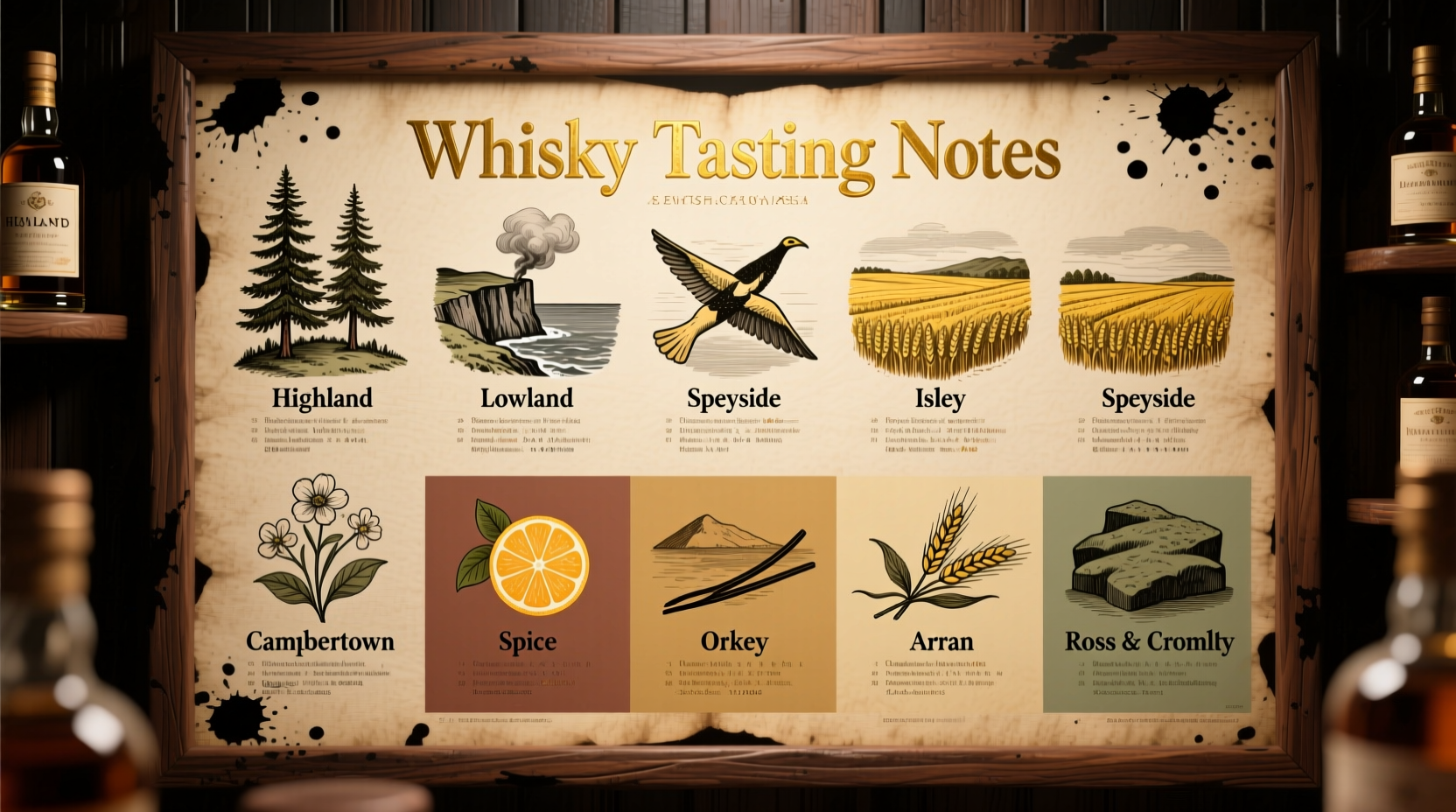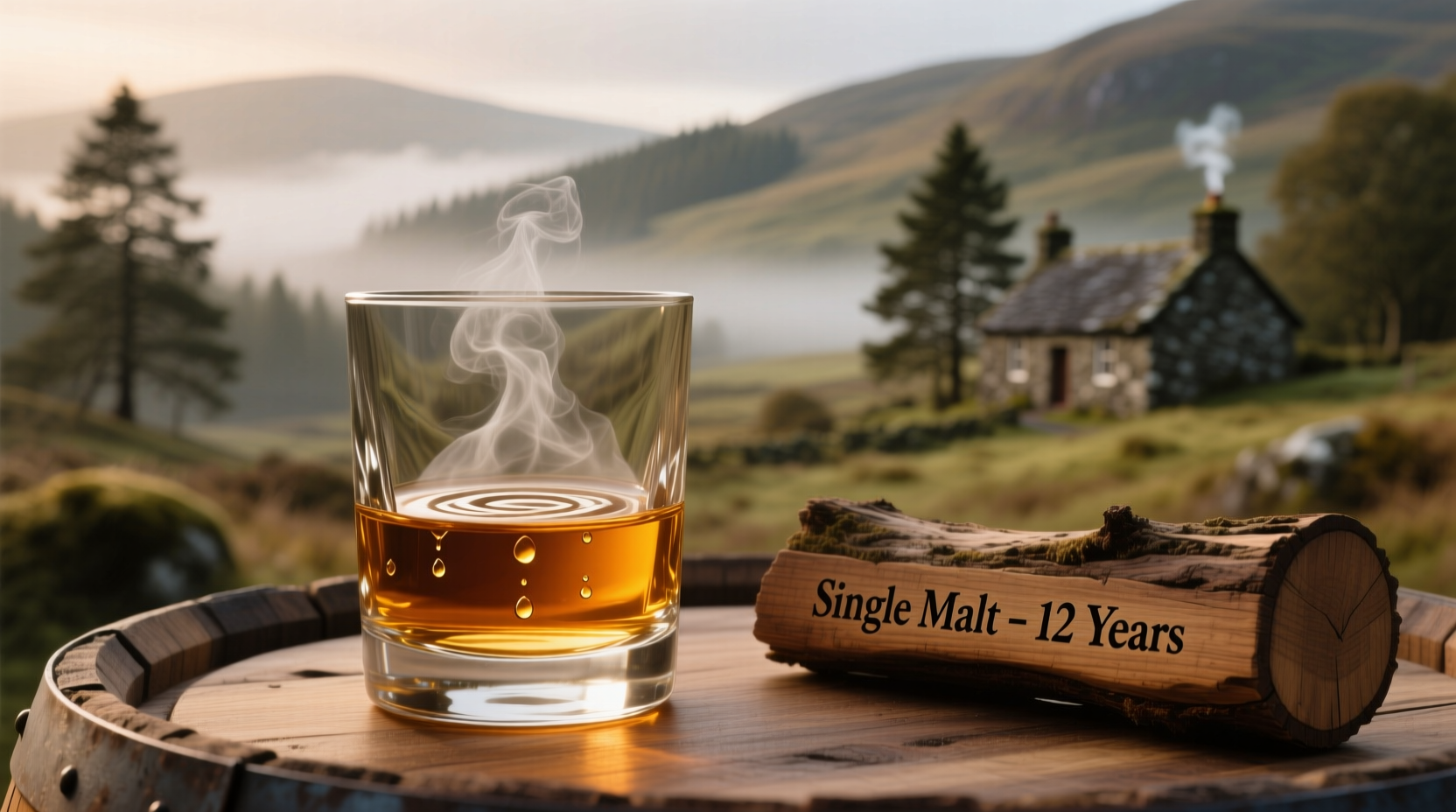Scotch whiskey typically offers complex flavors ranging from smoky peat and dried fruit to vanilla, honey, and spice notes, with variations depending on region, aging process, and cask type. The distinctive taste comes from malting, distillation, and maturation in oak barrels for at least three years.
Ever wondered what gives scotch whiskey its distinctive character? Whether you're a curious newcomer or looking to deepen your appreciation, understanding scotch's flavor profile transforms how you experience this iconic spirit. Unlike other whiskeys, scotch delivers a remarkable spectrum of tastes shaped by Scotland's diverse regions, traditional production methods, and careful aging processes.
Your First Sip: What to Expect When Tasting Scotch
That first encounter with scotch can be surprising if you're expecting something similar to bourbon or Irish whiskey. Authentic scotch delivers layered complexity rather than straightforward sweetness. Most single malts present an initial wave of either smoky peat (particularly from Islay) or mellow fruitiness (common in Speyside), followed by secondary notes that emerge as the whiskey opens up in your glass.
Professional tasters describe scotch using specific flavor categories that help articulate its nuanced profile:
- Primary notes - The immediate flavors you detect (smoke, citrus, honey)
- Secondary notes - Flavors that emerge after the whiskey breathes (vanilla, spice, dried fruit)
- Tertiary notes - Subtle undertones that appear with careful tasting (leather, tobacco, floral hints)
| Flavor Category | Common Descriptors | Typical Origin |
|---|---|---|
| Smoke & Peat | Iodine, seaweed, campfire, medicinal | Islay, some Highland malts |
| Fruit & Floral | Apple, pear, citrus, honey, blossom | Speyside, Lowland |
| Spice & Oak | Vanilla, cinnamon, nutmeg, caramel | All regions (sherry cask influence) |
| Rich & Earthy | Leather, tobacco, chocolate, dried fruit | Islay, Island malts |
Why Scotch Tastes Different From Other Whiskeys
The distinctive flavor profile of scotch comes from specific production elements you won't find in other whiskeys:
Peat exposure during malting - Traditional Scottish distilleries dry malted barley over peat fires, infusing phenolic compounds that create that signature smoky character. The peat level varies dramatically by region, with Islay malts showing the strongest peat influence.
Triple distillation rarity - Unlike Irish whiskey which commonly uses triple distillation, most scotch undergoes double distillation, preserving more congeners that contribute to flavor complexity.
Mandatory oak aging - By law, scotch must age in oak containers for minimum three years, but most premium expressions age 10-25 years. The cask type (ex-bourbon, sherry, port) dramatically influences final flavor.

Regional Flavor Profiles: How Location Shapes Taste
Scotland's designated whisky regions produce distinctly different flavor profiles due to local water sources, climate, and traditional methods:
Islay: The Bold and Peaty
Known for intensely smoky, medicinal whiskies with notes of seaweed, iodine, and campfire. Distilleries like Ardbeg and Laphroaig showcase the most powerful peat expressions, while Bruichladdich offers more nuanced variations. The maritime environment contributes briny undertones that distinguish Islay malts.
Speyside: The Fruity and Complex
Home to 50% of Scotland's distilleries, Speyside produces elegant whiskies with pronounced fruit notes (apple, pear, citrus), honey, and vanilla. Glenfiddich and Macallan exemplify this region's approachable yet complex style, often featuring sherry cask influence that adds dried fruit and spice notes.
Highland: The Diverse Middle Ground
Encompassing a vast area with varied microclimates, Highland scotch ranges from light and floral (Glenmorangie) to rich and sherried (Dalmore). Coastal distilleries often show subtle saltiness, while inland producers favor maltier profiles. This region demonstrates scotch's incredible versatility.
Lowland: The Gentle Introduction
With typically unpeated, light whiskies featuring grassy, floral notes and subtle sweetness, Lowland malts like Auchentoshan make ideal entry points for new scotch drinkers. The triple distillation common in this region creates exceptionally smooth, approachable spirits.
The Evolution of Scotch Tasting: From Medicinal Elixir to Refined Experience
Scotch tasting has transformed dramatically over centuries:
- 18th-19th century - Primarily consumed as a harsh, unaged spirit often mixed with herbs for medicinal purposes
- Early 20th century - Recognition of aging benefits led to the development of single malt categories
- 1960s-1980s - Scotch gained global popularity but was often diluted with mixers, obscuring nuanced flavors
- Modern era - The craft spirits movement has revived appreciation for scotch's complexity, with tasters now exploring subtle flavor notes rather than masking the spirit
How to Taste Scotch Like a Pro: Practical Guidance
Getting the most from scotch requires proper technique. Follow these steps for optimal flavor discovery:
- Choose the right glass - A tulip-shaped Glencairn glass concentrates aromas while allowing proper swirling
- Observe the color - Deeper amber indicates longer aging or sherry cask influence
- Smell before sipping - Gently swirl and take short sniffs to identify primary aromas
- First taste - Take a small sip, let it coat your mouth, then swallow to assess initial impressions
- Add water - A few drops of still water opens up complex flavors by reducing alcohol burn
- Second tasting - Reassess after water addition to discover secondary and tertiary notes
Remember that personal taste preferences significantly influence your experience. What one person describes as "medicinal," another might call "complex." Trust your own palate while learning the language of scotch tasting.
Common Misconceptions About Scotch Flavor
Several myths persist about scotch's taste that can set unrealistic expectations:
- "All scotch is extremely smoky" - Only Islay and some Island malts feature prominent peat; many regions produce unpeated, fruity expressions
- "Older always means better" - While aging develops complexity, excessively old scotch can become overly woody and lose balance
- "Scotch should be drunk with ice" - Ice numbs your palate and dilutes delicate flavors; room temperature with a water dropper is preferred for tasting
- "Peat is a flaw" - Peat is a deliberate flavor component representing Scotland's terroir, not a production error
Building Your Scotch Palate: Practical Next Steps
Developing your ability to identify scotch flavors takes practice but yields tremendous rewards:
Start with a flavor comparison flight featuring one representative from different regions: a light Lowland (Auchentoshan), fruity Speyside (Glenlivet), balanced Highland (Glenmorangie), and peaty Islay (Lagavulin). Taste them side by side to identify regional characteristics.
Keep a tasting journal noting your impressions. Don't worry about using "correct" terminology initially—your personal descriptors will evolve as your palate develops. Compare your notes with official tasting notes from distilleries to expand your flavor vocabulary.
Attend guided tastings when possible. Many distilleries and specialty bars offer educational sessions that help train your palate to identify specific flavor components. The guidance of an experienced taster accelerates your learning curve significantly.
When Flavor Descriptions Don't Match Your Experience
It's completely normal if professional tasting notes don't align with your initial impressions. Several factors influence how you perceive scotch flavors:
- Personal taste sensitivity - Genetic variations affect how we detect certain compounds
- Environmental factors - Room temperature, surrounding smells, and even what you've recently eaten impact perception
- Glassware quality - Poor quality glass can introduce off-notes
- Water chemistry - The mineral content of water used for dilution affects flavor release
Don't be discouraged if your experience differs from published tasting notes. The journey of discovering scotch is deeply personal—your interpretation matters more than matching someone else's description.
Discovering Your Perfect Scotch Match
Rather than searching for the "best" scotch, focus on finding expressions that match your evolving palate:
If you enjoy bourbon, try Highland or Speyside malts aged in ex-bourbon casks for familiar vanilla and caramel notes with scotch's distinctive complexity.
If you prefer rye whiskey, explore sherried Highland malts that offer similar spice notes with added fruit and oak complexity.
If you're new to peated whiskies, start with milder expressions like Highland Park before progressing to heavily peated Islay malts.
Remember that scotch appreciation develops over time. What seems harsh initially often reveals beautiful complexity with repeated tastings. The most important factor isn't matching professional tasting notes—it's discovering what you enjoy about this remarkable spirit.











 浙公网安备
33010002000092号
浙公网安备
33010002000092号 浙B2-20120091-4
浙B2-20120091-4